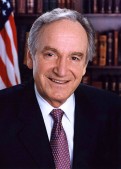Recess round-up: June 22, 2010
A daily dose of education news around the nation – just in time for a little mid-day break!
Reform: Charter school has “substantial impact,” but the debate goes on. (The Hechinger Report)
Research: What do we know about teachers and merit pay? (Education Commission of the States)
College: Hedge funder and bestselling author Steve Eisman will testify before the U.S. Senate Thursday. He’s betting against the for-profit higher education industry. (Bloomberg Businessweek)
Funding: Author Paul Tough’s update on Promise Neighborhoods in Seattle and Texas. (Whatever It Takes book blog)
International: Stanford program tries to improve education for China’s rural poor. (San Jose Mercury News)
Charter school has “substantial impact,” but the debate goes on
A study out today finds that the Knowledge is Power Program (KIPP), one of the most well-known charter school operators in the country, “substantially” impacts student test scores in reading and math. Half of the KIPP schools in the study are on their way to cutting the black-white achievement gap in half in three years, according to the researchers at Mathematica Policy Research, a New Jersey-based group.
The study, which was commissioned by KIPP and non-experimental in design, compared the “achievement trajectories” of students before and after entering a KIPP school. Experimental studies are considered the “gold standard” in research, and Mathematica has promised that future studies on KIPP will be experimental rather than non-experimental.
Beyond the test scores, there are some other interesting take-aways.
A couple of findings aren’t terribly surprising for those who follow the ins and outs of the debate over charter schools: KIPP students are poorer and more likely to be minority than their counterparts in other schools, but they are less likely to struggle with English or need special-education services.
Other findings shed more light on some emerging questions: attrition rates aren’t higher at KIPP schools, meaning students don’t appear to be leaving KIPP more often, or, as some critics have suggested of charters in general, don’t appear to be pushed out if they aren’t successful. At the same time, KIPP students tend to be held back to repeat a grade more often than students at regular schools, an issue I blogged about last week.
The study may boost KIPP’s reputation, but it’s unlikely to end the heated debate over whether charters perform better or worse than regular schools, or just about the same.
Update
Some of the coverage of the KIPP report:
The Washington Post says the report “is unlikely to resolve debate over what is behind the network’s success.”
Also for the Washington Post, Jay Mathews writes on his blog that “the preliminary report contradicts a notion often spread by KIPP critics on the Internet that KIPP schools have higher attrition rates than regular public schools in their areas because they are kicking out troublesome kids.”
In Houston, where KIPP is a major presence, the Houston Chronicle writes that the report shows the charter school network doesn’t appear to be skimming the best students, as charter school critics often charge.
Mother Jones says this appears to be a success story that is particularly exciting because of KIPP’s results in middle school, where academic achievement tends to dip. But the success is “limited,” and “probably always will be.”
And finally, a sharp critique of the study from the Education and Public Interest Center at the University of Colorado argues that the Mathematica study gets it wrong on attrition – the number of students who leave a school. “They never considered the receiving or intake rate. Even though the researchers agree that the students who are mobile are lower performing, they do not take into account the reality that KIPP schools do not generally receive these students.”
Improve your writing “quickly and easily,” Pearson promises

Fyodor Dostoyevsky
The grammatically challenged of this world have new hope: Pearson Education announced today that it’s releasing a series of applications for the iPhone and iPod touch called “GrammarPrep” that will apparently help “college students, professionals and English learners quickly and easily improve their writing skills.”
Really? I didn’t know there was a quick and easy way to improve one’s writing. (Why didn’t Pearson tell me this sooner, back when I made my living as a full-time English teacher? Nowadays I just teach writing part time.)
Call me old-school, but I don’t believe there’s a quick or easy way to get better at writing. Rather, it’s a lifelong battle, a labor of love, a daily commitment to the written and spoken word. And I’d be willing to bet most writers and writing teachers would agree. Shortcuts don’t exist.
Show me a great writer and I’ll show you a voracious reader. The most surefire way to become a better writer? Read. Read a ton. Read until you’re blind.
And then write, write, write. It’s trial and error. It’s revision. It’s the realization that everything expressed in writing can somehow still be better expressed — a tweak to the diction here, a reworking of the syntax there. Good writers are unafraid of rewriting; in fact, they see it — rightly — as central to the writing process.
And, at the end of the day, we should acknowledge that some things are just too hard or important to express in words (written or spoken). Stephen King’s line on this, in On Writing: A Memoir of the Craft, is one I’ll never forget: “The most important things are the hardest to say, because words diminish them.”
And then there’s the brilliant paragraph Dostoyevsky gives the memorable character Prince Myshkin in The Idiot: “in every serious human thought born in anyone’s brain there is always something left over which is impossible to communicate to others, even though one were to write whole volumes and explain the idea for thirty-five years; there will always be something left which cannot be coaxed out of your brain and which will remain with you forever; you will die with it, without ever communicating to anyone what is perhaps the essence of your thought.”
So, yeah, I don’t really buy Pearson’s promise to make everyone a better writer “quickly and easily.” As an educator, I believe everyone can get better at writing — but doing so is neither quick nor easy.
(Postscript: The good reader, the close reader, the reader who delights in detail and notes nuance, will perhaps point out that I’ve failed to distinguish between “writing” and “writing skills.” Pearson’s promise, to be precise, is that people who use its “GrammarPrep” apps will “quickly and easily improve their writing skills” — which isn’t the same thing, one could argue, as “quickly and easily” improving their writing. But I’d counter that this is a distinction without a difference: better writing skills matter only to the degree that they lead to better writing.)
Recess round-up: June 21, 2010
A daily dose of education news from around the nation – just in time for a little mid-day break!
Education reform and financing in Rhode Island: From worst to first in a formula for funding education. (The Valley Breeze and The Providence Journal via Whitney Tilson)
Graduation rates: How are high school and college graduation rates calculated? In Houston last week, we learned that 15 percent of the school district’s ninth-graders had completed college degrees four years after finishing high school. The original post was updated three times. (The Houston Chronicle via Whitney Tilson)
Teaching and college readiness: When it comes to reading, just slow down. (USA Today)
Education abroad: Linking education to economic opportunity. (CNNMoney)
Charter schools: Ten foster kids find success at a school in Philadelphia. (NPR Morning Edition)
iCollege: There’s an app for that
Among the chatter this week further to Governor Tim Pawlenty’s call for more online classes, we learned that “some of the points he made in the nationally televised interview with Jon Stewart don’t square with statements he and his higher education appointees have made in Minnesota,” according to Sharon Schmickle of The Hechinger Report partner MinnPost.
At first glance, the Pawlenty administration saw e-learning as a potential cost saver, Susan Heegaard, director of the Minnesota Office of Higher Education testified last year before a higher education panel of the Senate Finance Committee.
“But after looking deeper, the governor came to realize that a shift to online courses could cost the state more money than traditional classroom education — at least for the next few years,” wrote Schmickle.
For those who missed the interview, Palenty asked: “Can’t I just pull that [university lecture] down on my iPhone or iPad whenever the heck I feel like it, from wherever I feel like it?” 
For Pawlenty himself, the answer depends on which technology he has and uses.
“Governor Pawlenty has an iPhone that he uses frequently and an iPod that he also uses, particularly when he goes running. (No iPad yet),” the Governor’s Chief of Staff, Brian McClung informed me by email.
The Governor raises an important question. iCollege for all is dependent on widespread access to this or similar technology. According to our calculations, based on TechCrunch data, approximately one in ten Americans has an iPhone and only about one in 600 currently has an iPad. In order for iCollege to have any real impact, distribution tools would need to be made more available. And of course, that costs money.
Read Sharon Schmickle’s story here.
–Susan Sawyers
Recess round-up: June 18th
College tuition: More than 5,000 students at Colorado State University will have their tuition cut for next year.
State universities in Idaho are considering charging different fees for different majors.
Rights violation: The American Civil Liberties Union (ACLU) is charging that students in New Hampshire had their 4th amendment rights violated when they were patted down before graduation.
Disabled children: Delaware Gov. Jack Markell signed a new law that requires schools to provide children with disabilities a “free and appropriate education.”
No Child Left Behind: Minnesota gubernatorial hopeful Matt Entenza thinks the state should ditch No Child Left Behind.
No more Ds: Larrie Reynolds, superintendent of the Mount Olive schools in New Jersey, wants to do away with Ds in the grading scale.
Charter schools: After initially saying it wouldn’t vote until August, Philadelphia’s School Reform Commission this week approved expansions for 22 charter schools for next year.
Bill Gates to billionaires: Donate, donate, donate!

Bill and Melinda Gates (photo by Kjetil Ree)
Bill and Melinda Gates, together with Warren Buffet, were on the Charlie Rose show last night to make a big annoucement: they’ve asked America’s billionaires to make a moral commitment to donate half or more of their fortunes to charity. Fortune has estimated that up to $600 billion could be at stake if the 400 wealthiest Americans go along with the “Giving Pledge” concept proposed by Buffet and the Gateses.
Buffet pledged back in 2006 to donate at least 99 percent of his money — now estimated at $47 billion — to charity, with much of it being distributed through the Bill & Melinda Gates Foundation. The Gates Foundation, which supports the work of The Hechinger Report, focuses on improving global health, global development, and U.S. education.
On the subject of U.S. education, Bill Gates, Sr. recently sat for an interview with his son — the Microsoft founder — at the 92nd Street Y in New York City. (I previously blogged about their conversation, and the question I asked Jr., here.) The interview can now be seen in its entirety here on the 92nd Street Y’s blog.
This is what Bill Gates, Sr. had to say about American education (starting at 27:50 in the video for those who wish to skip ahead):
“With all the greatness of this country, we have ended up with a lousy public education system. And there are so many countries in this world that are doing a better job of educating their children than this very sophisticated, intelligent, democratically operated place. And it needs a lot of change, the most fundamental element of which is to figure out a way to change the relationship between the school system and its teachers so that there is more incentive brought to bear on the person who is teaching in our public schools — and thereby … liv[e] up to the notion of being a profession and attracting more people so that skills are rewarded, and so that we know what teachers are really doing a good job for their kids and who is not doing as good a job… It’s a fundamental problem, it’s going to take a lot of time to move away, but things are happening… There are cracks in the dike. We’re beginning to see different things happen…”
Indeed, lots of new things are happening on the education front — from important research on teacher effectiveness (funded in large part by the Gates Foundation) to teacher contracts that could significantly alter how teachers are compensated and earn tenure.
To continue the conversation begun by Bill Gates, Sr.: in what concrete ways could or should “the relationship between the school system and its teachers” change? We welcome your thoughts.
Recess round-up: June 17
Special education: Iowa and Kansas have been granted federal waivers to cut back on the amount of money they spend on special education. South Carolina is waiting to find out the results of its waiver request, and one expert thinks more requests may be on the way. (Ed Week)
Gambling: Georgia Attorney General Thurbert Baker wants to bring electronic bingo to the state to get more funding for education, estimating it would bring in $2 billion a year for the schools. (Savannah Morning News)
Oklahoma public schools got good news recently; the state lottery will actually give schools in the state $6 million more than originally estimated. (Tulsa World)
College tuition: University of Tennessee tuition is poised to increase by 8.5 percent next year. (The Tennessean)
Testing: A question on this year’s standardized high school math test in Texas puzzled so many students so much, they devoted a Facebook page to trying to answer it. (The Times Record News)
Student assignment: A parent in Jefferson County, Kentucky is suing the school district over its student assignment plan, arguing that it violates a state law. (The Courier-Journal)
Layoffs: As five charter schools in Baton Rouge, Louisiana plan to start using outside vendors for food, over 20 food service employees will most likely lose their jobs. (The Advocate)
Are for-profit schools breathing sigh of relief? Or in holding pattern?
Fast-growing for-profit schools have some more time to worry about new rules that have the potential to drastically alter — and possibly curtail — their future.
Enrollment in for-profit schools has soared in recent years. The consulting firm Eduventures predicted a 25 percent jump in the number of students expected to be educated at for-profit schools by 2019. That would seem like excellent news to the Career College Association (CCA), whose members include schools that support and educate over a million students a year in some 200 different fields. The sector is growing in part because community colleges across the U.S. are oversubscribed, particularly in California.
And yet the CCA, based in Washington D.C., has been most concerned in recent weeks about new U.S. Department of Education regulations that would have cut off federal aid to for-profit colleges if their graduates could not earn enough to pay back their student loans, amid growing concerns that the schools leave students with too much debt. The department did propose curtailing the ways schools recruit students, and it wants the schools to disclose both their graduation and their job-placement rates.
U.S. Education Secretary Arne Duncan said in a statement on Tuesday, though, that no decision had been reached on what debt-to-income ratios would cut off federal aid to the schools — a provision known as “gainful employment” — and he acknowledged that the department “is still developing metrics to hold programs accountable for preparing their students for gainful employment.”
Duncan said the key issues “are complicated and we want to get it right,” and said the new rules will be released later this summer. “This is about accountability and protecting students,” he said.
CCA President Harris Miller and his group had lobbied heavily in recent weeks against the new rules, and it’s quite possible the efforts paid off, even as Sen. Tom Harkin (D-I0wa) announced a series of hearings to examine federal education spending at for-profit higher education institutions.
Miller said that Duncan had heard the industry’s arguments.
“The Department of Education heard concerns from our sector, traditional higher education, a bipartisan group of lawmakers, and many employer groups about the likely consequences of the gainful employment metric that was under consideration that would have eliminated access for hundreds of thousands of students without helping anyone,” he said. “Secretary Duncan said he wants to get this right, and the focus on disclosure in the proposed rule rather than unjustified and unjustifiable metrics shows he is true to his word.”
The Hechinger Report, in collaboration with The Washington Post, earlier this week described the huge growth of for-profit schools in California, where agreements are growing between cash-strapped community colleges and for-profits.
“If the for-profit schools continue to grow at the same rate they have in recent years, they will become more than just a niche player in the post-secondary landsacpe,” noted Eliza Krigman, who covers education for the National Journal magazine, in a blog post that appeared in The Atlantic. The growth of for-profit schools also comes at a time when President Barack Obama is pushing more Americans to earn college degrees.
One positive reaction to the delay of new rules on Wedneday appeared to be coming from the stock market, according to stories in Reuters, the Wall Street Journal and Bloomberg News. For-profit stocks were all rising — just as they did the day it was announced that Robert Shireman, the deputy undersecretary of education who is considered the architect of the new rules, would be leaving his post.
Recess round-up: June 16
HechingerEd presents its newest feature: the Recess Round-Up. We’ll give you a daily dose of what stories are making education-news headlines around the nation. The round-up will be posted every day around noon – just in time for a little mid-day break!
Class size: Classes in Chicago may balloon to 35 students this fall, as the city struggles to close a $427-million deficit.
Raises refused: Some school leaders in Colorado have turned down bonuses or raises written into their contracts, including Denver superintendent Tom Boasberg, who’s donating $47,707 in deferred compensation to the Denver Public Schools Foundation.
Opting out: Louisiana public schools may soon have the opportunity to opt out some state rules and regulations – operating more like charter schools. A bill allowing this passed the state senate on Tuesday and is heading back to the house for approval.
Longer days: Memphis, Tennessee plans to use the bulk of its Race to the Top winnings on the eight lowest-performing schools in the district, extending the school day and school year, among other things.
Fewer days: Meanwhile, the Lake Oswego district in Oregon moved closer to cutting three days off its school year. If the teachers’ union approves the proposal on June 17th, Lake Oswego will join a growing list of Oregon school districts trimming days to offset budget cuts.
Unexcused absences: District leaders in Des Moines, Iowa want to increase the number of unexcused absences students are allowed from two a year to 10.




